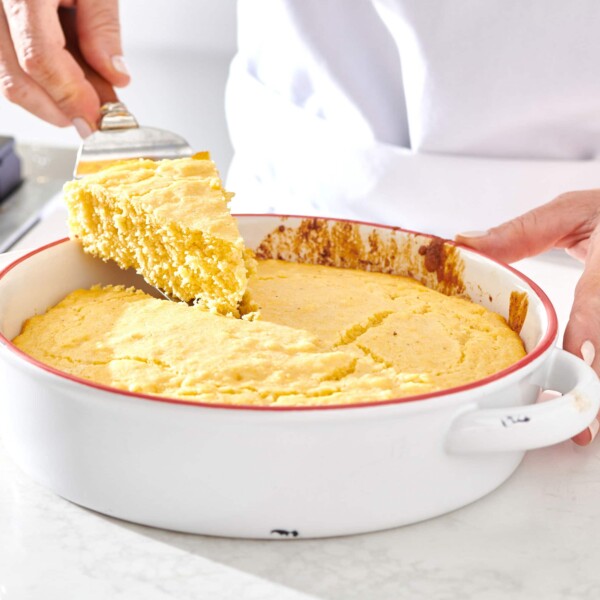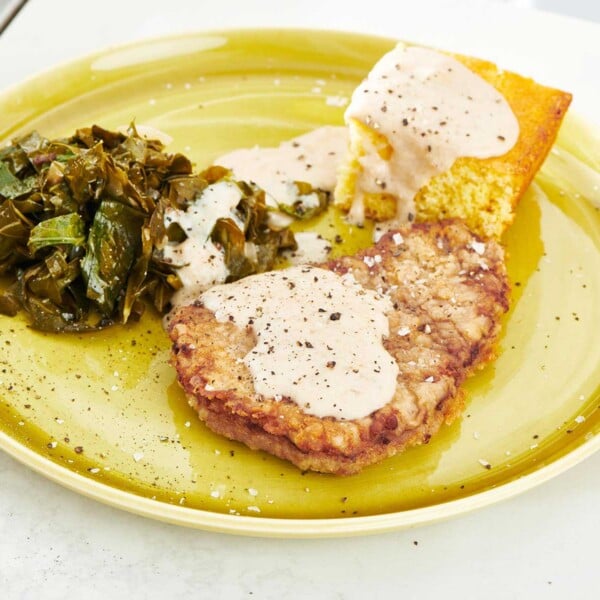White Gravy
Updated Mar 13, 2025
This post may contain affiliate links. Please read our disclosure policy.
Pan drippings form a base of a creamy thick gravy that goes with everything from steak to fried chicken.
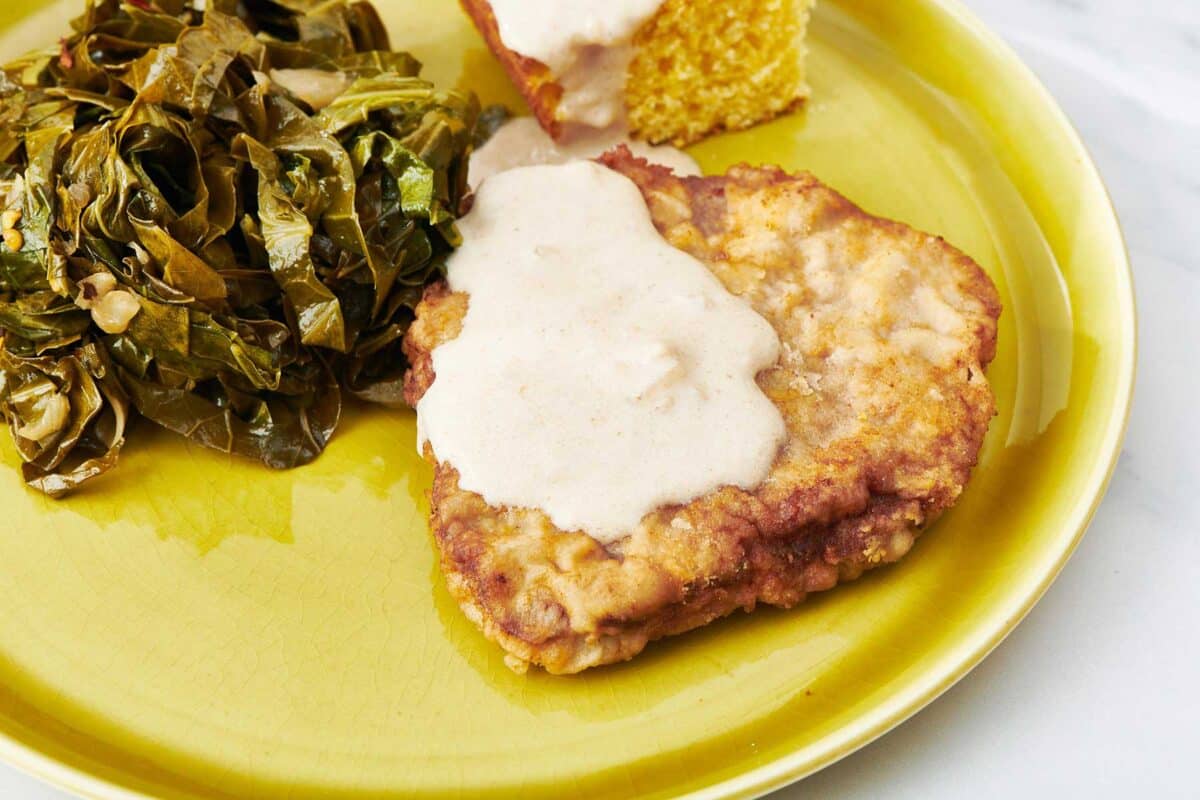
White gravy is a staple sauce in the South. It’s made from the pan drippings left from roasting or pan-frying some sort of meat, whether that’s steak, poultry, pork, or some kind of sausage. You can also use bacon grease or drippings. Flour is added to form a roux, and then that is thinned with milk, a touch of onion (usually), and salt and pepper. And that’s it! Really, making a homemade white gravy recipe is easy!
White gravy is the companion to all sorts of comfort food Southern dishes, from fried chicken to pan-fried pork chops to chicken fried steak to grits. You will often see it served for breakfast with homemade biscuits and sausage. It is usually a fairly thick gravy, creamy and simple, basically a béchamel sauce. It should be generously seasoned with freshly cracked black pepper.
White gravy might also be called white pepper gravy, milk gravy, sausage gravy, white country gravy, or cream gravy in some regions.
By signing up, you agree to our Privacy Policy.
What's In This Post?

What’s the Difference Between White Gravy and Brown Gravy?
In short, white gravy contains milk, while brown gravy contains broth. Brown gravy might also be more heavily seasoned with herbs and spices, while white gravy is usually a very simple sauce.
Ingredients
- Pan drippings – You can use fond from basically any meat from turkey to pan-fried chicken to pork or steak.
- All-purpose flour – Used to thicken the gravy.
- Milk – This adds a rich creaminess; for the most ideal flavor and texture I recommend using whole milk.
- White onion – This is optional but will add a great depth of flavor and texture.
- Salt and ground black pepper – To taste.
How to Make White Gravy
- Reserve pan drippings: Keep 1/4 cup of the meat drippings in the pan or skillet.
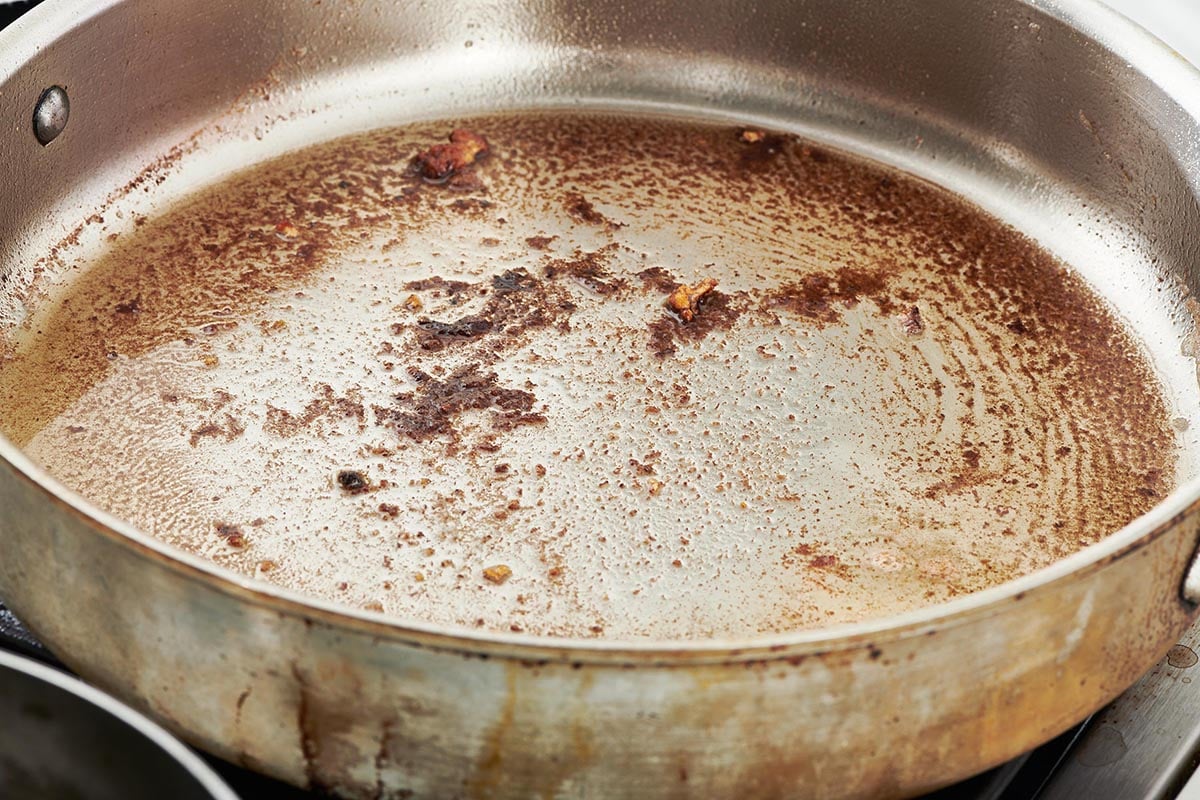
- Mix in the flour: Over medium-high heat, whisk the flour with the drippings until it turns golden brown and starts to thicken and bubble. This is a simple roux.
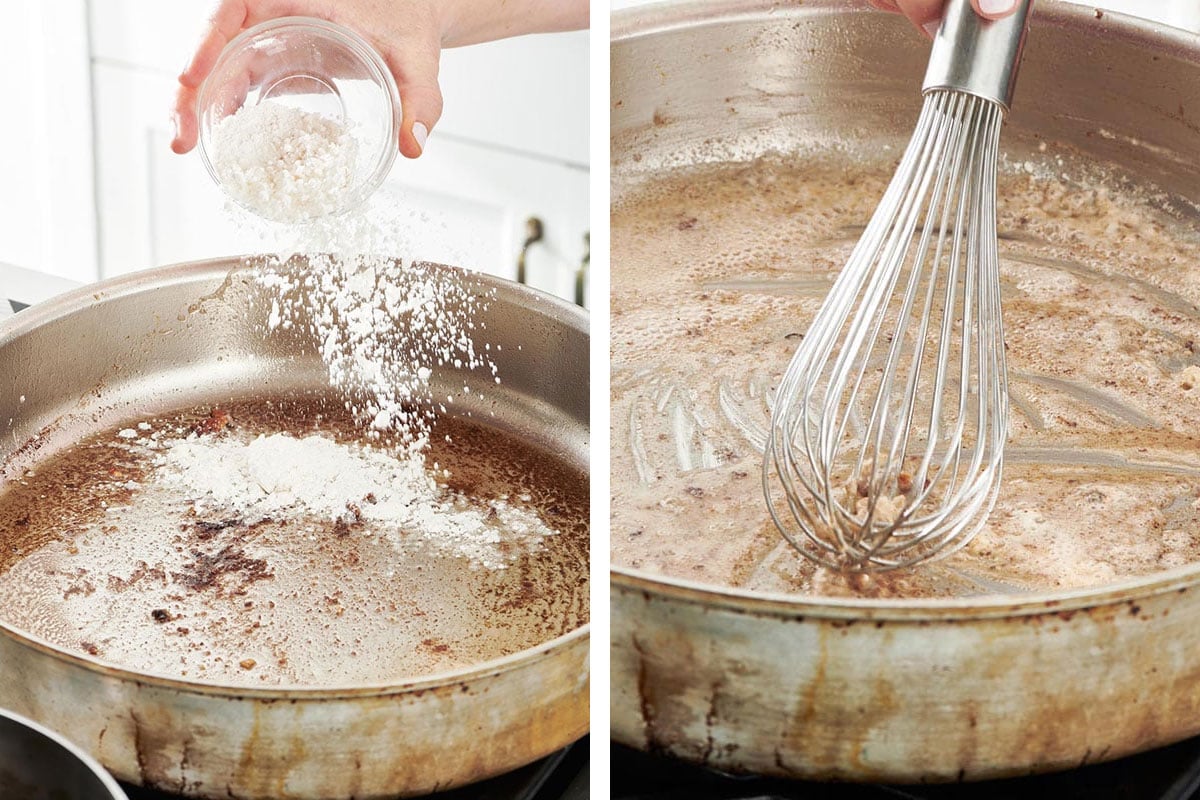
- Add the remaining ingredients: Remove from the heat and gradually add the milk, whisking constantly. Add the onion, if using.
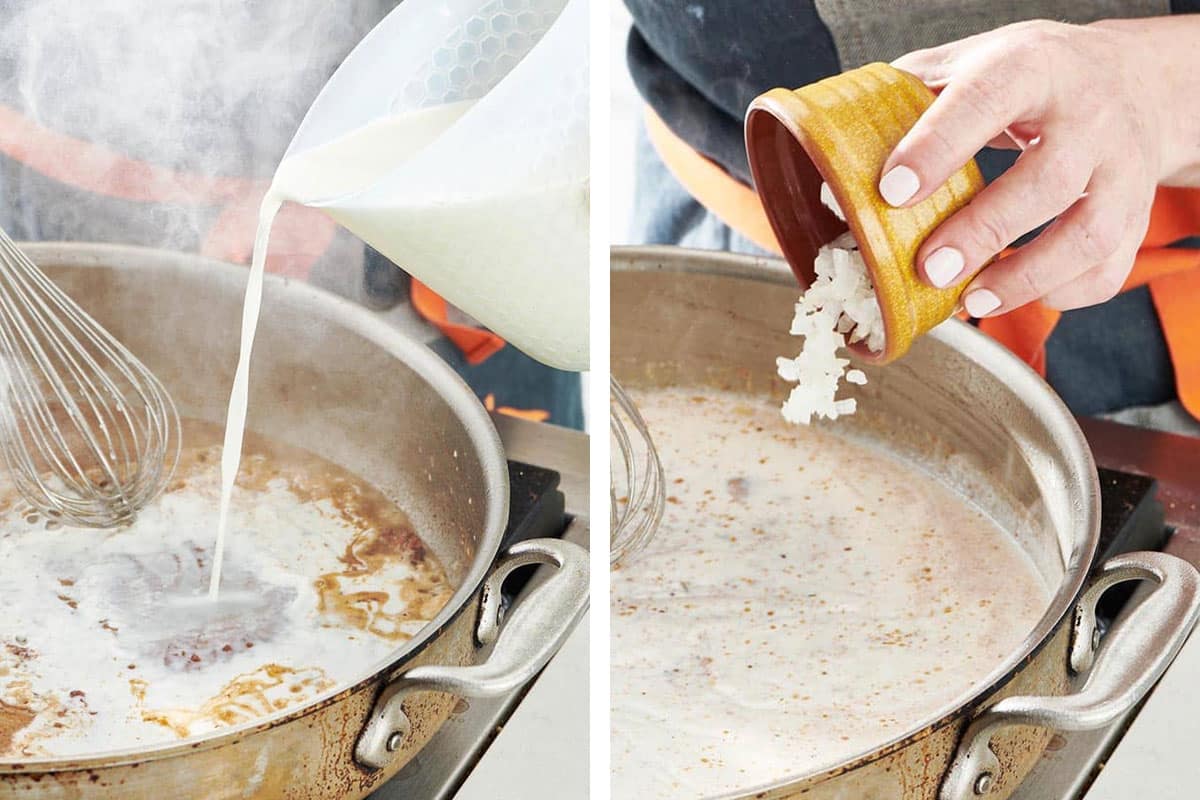
- Finish: Return to the heat and whisk frequently until thickened to the desired consistency, about 5 minutes. Season with salt and pepper and serve hot.

Tips and Variations
- If you have flour left from dredging and frying up chicken or steaks or breakfast sausage or whatever, this is a great place to use it. Since it will cook as the gravy is being made, any bacteria that might have been introduced by contact with raw meat will be killed off, so it’s perfectly safe and a nice way to prevent waste.
- If you don’t have enough pan drippings for the base of the white gravy, you can add some melted butter.
- Dori Sanders, in her book Dori Sanders’ Country Cooking says, “be generous with the pepper here; it really adds to the flavor.” She also recommends adding the milk to the pot off the heat and then returning the pot to the heat and cooking until the mixture thickens.
- Whisk the gravy frequently, if not constantly, to prevent burning and to make the gravy evenly smooth and thick.
- John Martin Taylor, author of The New Southern Cook, recommends adding a couple of tablespoons of grated white onion to the gravy for even more flavor.
- Gravy thickens as it cools. If you want to thin it out, add a little bit of hot water to the sauce as it heats or reheat over low heat on the stove.
- If you want to make your white gravy a bit spicy, add some cayenne pepper.
- Use gluten-free flour to make a gluten-free white gravy (make sure there is no gluten in the meat you cooked to make the drippings).
Storage
Store homemade gravy in an airtight container in the fridge for up to 1 week.
Leftover gravy will thicken in the refrigerator. You can reheat it over low heat in a small pot on the stove, making sure to stir frequently. If it’s too thick, add a few tablespoons of broth or water.
You can reheat gravy in the microwave, too. Stir it every 30 seconds so it warms evenly. To prevent splattering, place a folded paper towel over the microwave-safe bowl.
What to Serve With White Gravy

More Homemade Sauces
Pin this now to find it later
Pin It
White Gravy
Ingredients
- ¼ cup pan drippings (from turkey, pan-fried chicken, pork, or steaks)
- ¼ cup all-purpose flour
- 2 cups milk (preferably whole)
- 2 tablespoons grated white onion (optional)
- Kosher salt and freshly ground black pepper (to taste)
Instructions
- In the pan that you use to fry, roast, or sear your meat, reserve 1/4 cup of the pan drippings or transfer them to a saucepot from the cooking pan. Heat the drippings over medium heat. Add the flour to the drippings.
- Whisk the flour in until it turns golden brown and starts to thicken and bubble, about 3 minutes. Remove from the heat and gradually add the milk, whisking constantly. Add the onion, if using.
- Return to the heat and whisk frequently until thickened, about 5 minutes. Taste and add salt and pepper as needed. Serve hot.
Notes
- If you have flour left from dredging and frying up chicken or steaks or whatever, this is a great place to use it. Since it will cook as the gravy is being made, any bacteria that might have been introduced by contact with raw meat will be killed off, so it’s perfectly safe and a nice way to prevent waste.
- If you don’t have enough pan drippings for the base of the white gravy you can add some melted butter.
- In her book Dori Sanders’ Country Cooking, Dori Sanders says, “Be generous with the pepper here; it really adds to the flavor.” She also recommends adding the milk to the pot off the heat, returning it to the heat, and cooking until the mixture thickens.
- Whisk the gravy frequently, if not constantly, to prevent burning and to make the gravy evenly smooth and thick.
- Gravy thickens as it cools. If you want to thin it out, add a little bit of hot water to the sauce as it heats or reheat over low heat on the stove.
- If you want to make your white gravy a bit spicy, add some cayenne pepper.
- Use gluten-free flour to make a gluten-free white gravy (make sure there is no gluten in the meat you cooked to make the drippings).
